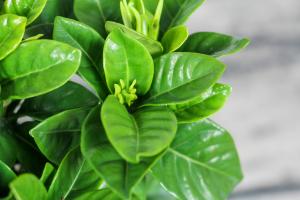1、 South China evening primrose
This kind of nocturnal incense usually grows in the mountains with a height of less than 500 meters and generally grows in the sun. The young branches of South China evening primrose are slightly hairy, but the old branches have no hair. The flowers are umbrella shaped. Generally, there are many flowers. The length of the pedicel is about 1cm and a little short hair grows
The calyx is thin and oval in shape, about 0.3cm long and about 0.2cm wide. The color of the Corolla is green, in the shape of a goblet, and the petals are cylindrical and trumpet shaped, which is very beautiful. This kind of nocturnal incense usually blooms in summer, so many people plant this kind of nocturnal incense at home

2、 Taiwan evening primrose
Taiwan evening primrose is a vine like shrub. It mainly grows in Taiwan Province of China. It generally grows in mountains and forests and attached to other trees. In addition, they are also distributed in India, Thailand and other places. The stems, branches and leaves of this kind of nocturnal incense are relatively thin and soft, with small hair growth, and the leaves are oval but slightly heart-shaped, and the top is slightly pointed, but the leaf base is peach heart-shaped, which is very popular. Its inflorescence part is umbrella shaped, and the smell of flowers is light. Generally, the calyx of flowers is covered with needles and short hairs. The seeds of this kind of nocturnal incense are oval and round, about 0.5cm in size. The flowering period is also around summer and August every year, and the fruiting period is in autumn and winter

3、 Nocturnal tuber
The growth place of nocturnal tuber is mainly in the forest in the south of China. The branches of this kind of nocturnal incense are thin and soft, and there is no short hair growth. The inflorescence is also umbrella shaped, and many flowers are open. Generally, the seeds of recumbent tuber are flat, and the flowering period is a little earlier than the other two kinds of tuber. It is in May in spring, and the fruiting period is in autumn every year


 jackfruit
jackfruit snake plant
snake plant hibiscus
hibiscus hydrangea
hydrangea lavender
lavender Green roses climb al...
Green roses climb al... If you don't pay att...
If you don't pay att... Management of four g...
Management of four g...

































